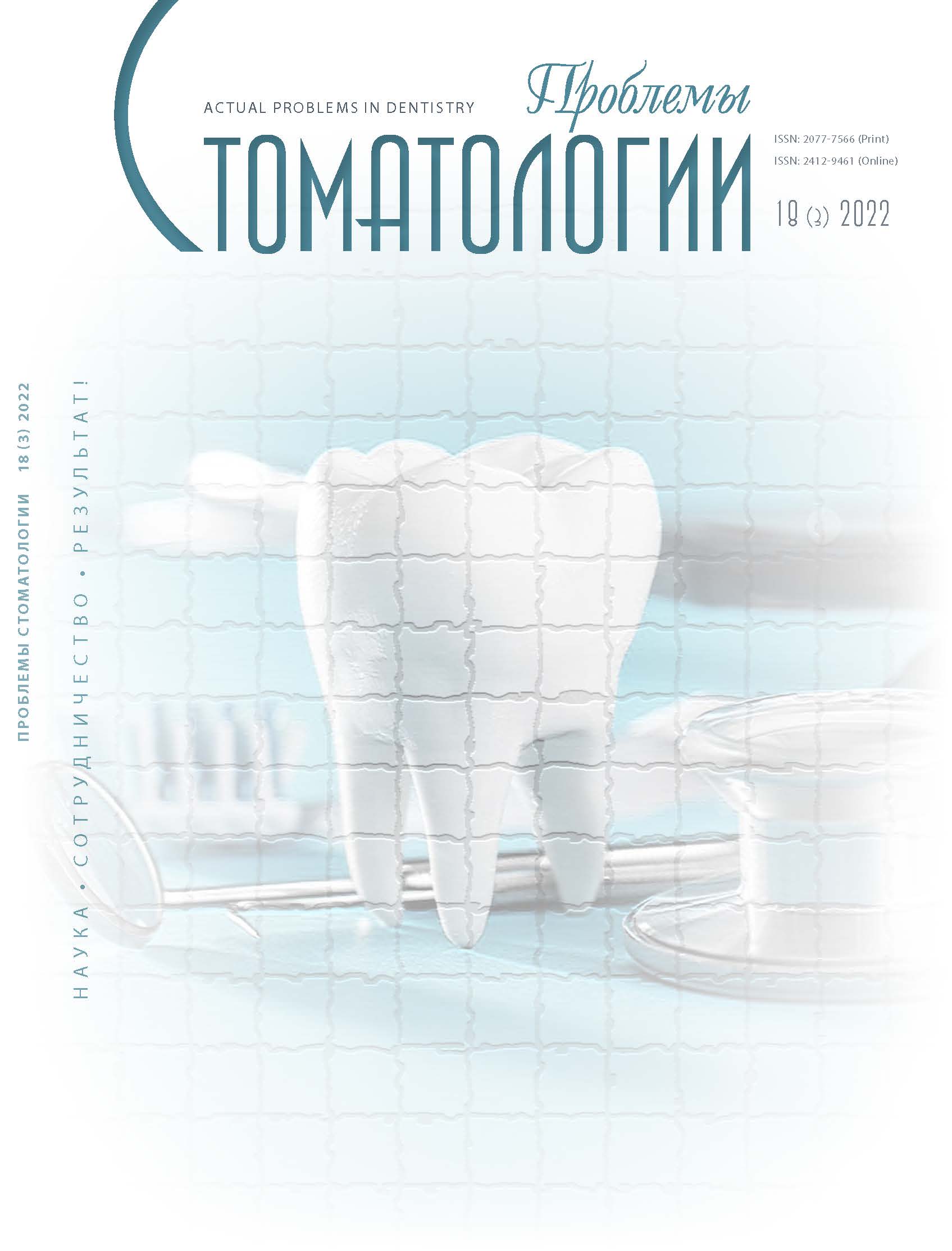Moscow, Moscow, Russian Federation
Moscow, Moscow, Russian Federation
Moscow, Moscow, Russian Federation
Moscow, Moscow, Russian Federation
Moscow, Moscow, Russian Federation
Moscow, Moscow, Russian Federation
Moscow, Moscow, Russian Federation
Moscow, Moscow, Russian Federation
Annotation Approbation of osteoplastic materials with the study of the mechanisms and development of methods of osteoregeneration remains one of the topical areas of research in surgical and orthopedic dentistry, requiring an integrated approach at various levels of organization of living systems. The aim of the study was to evaluate osteoregeneration in a model of bone diastasis using "BAK-1000" in combination with VEGF-stimulated MSCs. Materials and methods. Male Sprague-Dawley rats (n = 45) were divided into two groups: I – control (n = 15) and experimental – II (n = 15) and III (n = 15). The creation of the osseointegration model included two surgical stages: at the first stage, MSCs were cultured; on the second stage, osteotomy was performed (groups I–III), the resulting defects were filled with implant material (groups II, III) in combination with autologous MSCs (only group III). Results. On the 120th day after completion of the second stage of the operation in group II, a low intensity of angiogenesis and osteogenesis was observed with partial local destruction of the cellular canalicular matrix. Group III showed moderate osteoregeneration and intense angiogenesis. However, in both groups, the formation of yellow microcrystals caused the development of signs of necrobiosis. Discussion. On the basis of the study, it was found that in groups II and III in the peri-implantation tissue, there was indeed a sharp hyperplasia of blood vessels, which was combined in time with the initial signs of osteogenesis. The identified negative changes in the peri-implant area were probably associated with the biological properties of the implanted material. Conclusions. There were no signs of pronounced osteoregeneration, and the proposed method for eliminating a bone defect using BAK-1000 in combination with VEGF-stimulated MSCs can be considered ineffective.
osteoregeneration, implantation, aluminosilicate material, mesenchymal stem cells, peri-implant zone
1. Svenskaya N., Beleckiy B. Siliko-kal'ciy-fosfatnye biokompozicionnye materialy dlya kostnoplasticheskoy hirurgii. Aktual'nye voprosy innovacionnoy ekonomiki. 2014;6:53-64. [N. Svenskaya, B. Beletsky. Silico-calcium-phosphate biocomposite materials for osteoplastic surgery. Topical issues of innovative economy. 2014;6:53-64. (In Russ.)]. https://elibrary.ru/item.asp?id=23496562
2. Albrektsson T., Johansson C. Osteoinduction, osteoconduction and osseointegration // Eur Spine J. Suppl. - 2001;10(2):S96-S101. https://doi.org/10.1007/s005860100282
3. Buza J.A., Einhorn T. Bone healing in 2016 // Clin Cases Miner Bone Metab. - 2016;13(2):101-105. https://doi.org/10.11138/ccmbm/2016.13.2.101
4. Evans J.F., Ricigliano A.E., Morante A.V., Martinez E., Vargas D., Thyagaraj J. Mesenchymal Stem Cell Regulation of Macrophage Phagocytosis; Quantitation and Imaging // J Vis Exp. - 2021;173. https://doi.org/10.3791/62729
5. Freeman F.E., Pitacco P., Van Dommelen L.H.A., et al. Development of a 3D Bioprinted Scaffold with Spatio-temporally Defined Patterns of BMP-2 and VEGF for the Regeneration of Large Bone Defects // Bio Protoc. - 2021;11(21):e4219. https://doi.org/10.21769/BioProtoc.4219
6. Gaur M., Dobke M., Lunyak V.V. Mesenchymal Stem Cells from Adipose Tissue in Clinical Applications for Dermatological Indications and Skin Aging // Int J Mol Sci. - 2017;18(1):208. https://doi.org/10.3390/ijms18010208
7. Guo X., Li M., Qi W., et al. Serial cellular events in bone formation initiated by calcium phosphate ceramics // Acta Biomater. - 2021;134:730-743. https://doi.org/10.1016/j.actbio.2021.07.037
8. Hwang N.S., Zhang C., Hwang Y.S., Varghese S. Mesenchymal stem cell differentiation and roles in regenerative medicine // Wiley Interdiscip Rev Syst Biol Med. - 2009;1(1):97-106. https://doi.org/10.1002/wsbm.26
9. Jackson M.V., Morrison T.J., Doherty D.F., et al. Mitochondrial Transfer via Tunneling Nanotubes is an Important Mechanism by Which Mesenchymal Stem Cells Enhance Macrophage Phagocytosis in the In Vitro and In Vivo Models of ARDS // Stem Cells. - 2016;34(8):2210-2223. https://doi.org/10.1002/stem.2372
10. Liu H., Li D., Zhang Y., Li M. Inflammation, mesenchymal stem cells and bone regeneration // Histochem Cell Biol. - 2018;149(4):393-404. https://doi.org/10.1007/s00418-018-1643-3
11. Wang X., Wang Y., Gou W., Lu Q., Peng J., Lu S. Role of mesenchymal stem cells in bone regeneration and fracture repair: a review // Int Orthop. - 2013;37(12):2491-2498. https://doi.org/10.1007/s00264-013-2059-2
12. Yun Y.R., Jang J.H., Jeon E. et al. Administration of growth factors for bone regeneration // Regen Med. - 2012;7(3):369-385. https://doi.org/10.2217/rme.12.1
13. Zhang D., Lv F.L., Wang G.H. Effects of HIF-1α on diabetic retinopathy angiogenesis and VEGF expression // Eur Rev Med Pharmacol Sci. - 2018;22(16):5071-5076. https://doi.org/10.26355/eurrev_201808_15699



















